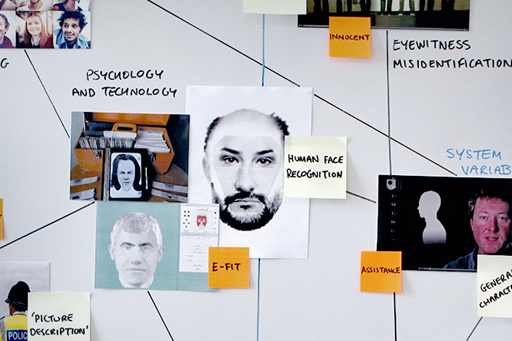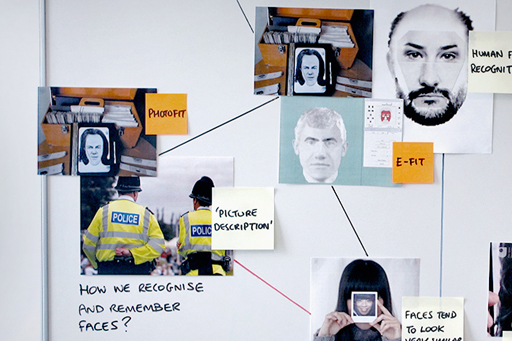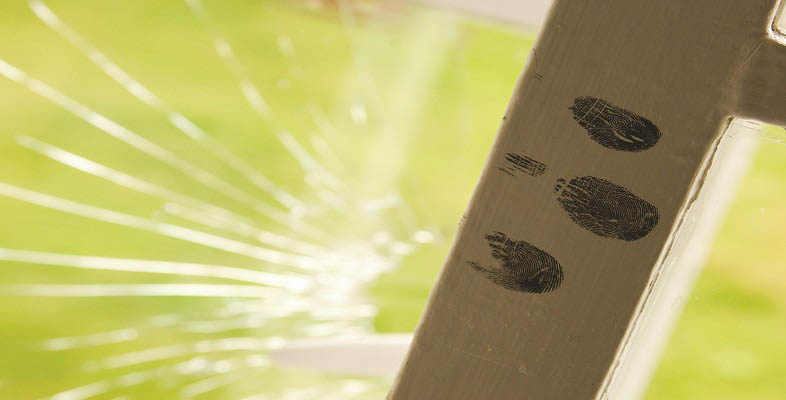1.4 Psychology and technology

The E-FIT system that replaced PhotoFIT represented a step in the right direction by presenting a witness with a whole face.
With improvements in technology, computerised versions of composite systems took over from PhotoFIT. These systems, which included the Electronic Facial Identification Technique (E-FIT), contained a much larger database of facial features. Perhaps more importantly, E-FIT operated by only ever presenting witnesses with a whole face. Although this was a psychological step in the right direction as it was more of a match for the ‘holistic’ way the mind remembers faces, one key drawback of the system was that the witness was still required to try and improve the face by changing individual features.
Laboratory research on face perception has shown that it is much harder to recognise a facial feature when it is seen on its own than when it is part of the whole face (Tanaka and Farah, 1993), so the E-FIT system was a better match for how the human mind works than PhotoFIT. Moreover, E-FIT also allowed witnesses to easily change the configuration of the features, that is the relative positions of the features, and psychological research has shown that the configuration of the face is a very important component in human face recognition.
You have just learned some important information about how we recognise and remember faces, that it is very difficult to describe a face verbally, and that early composite systems, such as PhotoFit, were problematic because they constructed faces in a way very different to how the brain works.
Your attempt to construct a PhotoFit Me image may well have left you with the impression that composite images are far from useful. However, remember that it was also very difficult to verbally describe a face, and that verbal descriptions tend to lack in any useful detail. It is also important to remember that composite images are not intended to be an exact copy of the face – instead they are a ‘picture description’ or ‘type-likeness’. The composite is created in the hope that by showing it to the public, someone familiar with the perpetrator will identify the person depicted and provide the police with a lead.

